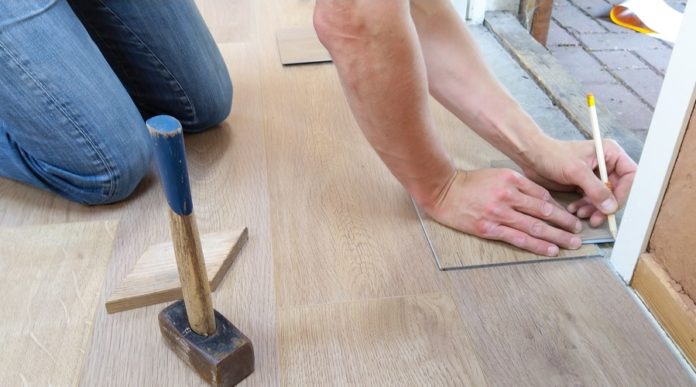The living room is a really easy room to choose flooring for, but it can also be a bit overwhelming as you have a range of possibilities. It is one of the highest traffic areas in the home as everyone will be using it regularly.
The only limitation is that you will want something that will not wear easily. This will rule out some carpets as they wear very easily and will look dingy and dull in a very short amount of time. It will also play an important role in the style and design of the room, either as a statement piece or as a complimenting design to the rest of the room.
People have been steering away from carpeting as it does not wear well over the course of time in this high traffic area. For a living room space, natural floor coverings such as wood floorboards or even tile are a much more viable option. They are also much easier to clean and hard flooring will of course avoid the wear that can appear in carpeting.
Carpet and natural flooring have one thing in common, that is that they are both comfortable underfoot. Plant-fibre natural flooring has increased dramatically in popularity for living areas and is a prominent choice among new renovations in recent years. This is because we often walk barefoot in the living spaces and this material is much softer than tiles for example. It provides comfort without the wearing of carpet fibres.
If you opt for carpet in the living area then you will need a specific type to avoid replacement in just a few years. You will need something that is tough and hard wearing. For this you should opt for 80 percent wool and 20 percent natural fibre combination as it will stand the daily foot traffic of the living area. For stain resistance, especially if you have young children, then polypropylene is a great option.
If you look towards hard flooring then you are opting for something that is certainly more durable but can also be quite expensive. You will sacrifice comfort for durability but this tough surface can be softened with a rug or other floor covering to give it a more homely feel.
Vinyl or laminate flooring can give the impression of a natural flooring such as wood, without the high price tag. Solid or engineered wood or natural stone add a touch of elegance to any room. Contemporary options such as concrete or resin have also risen in popularity and can be a cheaper option while also just as durable and easy to maintain.
Wood gives the room a touch of natural beauty and is quite versatile. It comes in a range of designs for your floorboards and you can choose a polish to compliment the room. You can incorporate patterns through the floorboards to add another element to the room or make it a statement piece. It is very durable and can last years. When damaged you can also simply sand it back and refinish it to restore it to its original beauty.
Engineered wood is slightly more sturdy and is also resistant to humidity. Laminate and vinyl are also great budget friendly options as they are far cheaper than many of the alternatives and are very versatile in style and design. They can give the look of wooden floors without the costs and high maintenance.
If you are looking for a more modern look then concrete or resin could be just what you are searching for! They can be seen in many of the modern designs and are great for an open plan living space. Concrete tiles are a cheaper option than a full concrete floor but both concrete and resin can be pricey. They will however far outlast any of the other options including floorboards. They can be finished in a range of styles and can look great as part of a modern living space.
Rubber flooring is a cheaper alternative to other modern flooring in this decade. It can be laid as tiles and will certainly last just as well as wood or natural stone.
For a cheap heating method you can opt to install underfloor heating beneath the floors before they are laid. Hard floors work best with underfloor heating so if you are looking at wood, tiles, stone, resin or concrete then this could work to your benefit in the long run. It will cut heating costs in winter and keep the communal living space cosy during the colder months.
It may be expensive to install but over the course of time you will save significantly. This would be a good option to consider before laying your floors and you should speak with your installer should you be looking to employ this heating method in your home.






















